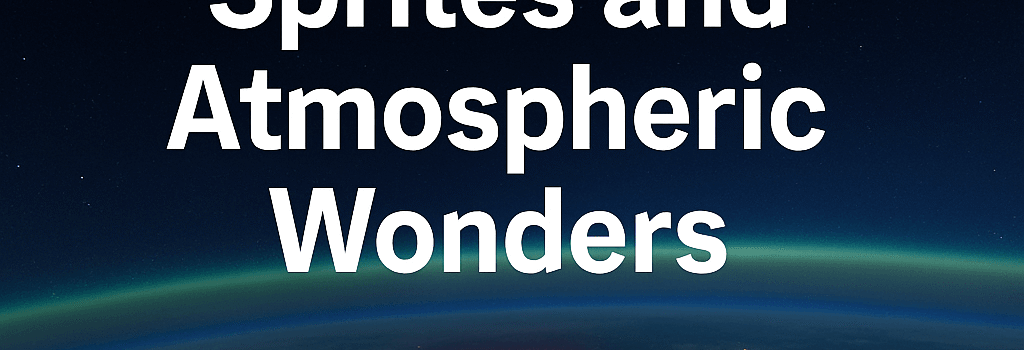ISS Time-Lapse Shows Lightning Sprites and Atmospheric Wonders

Welcome back to the Tuesday Telescope. In an era when pseudoscience floods social feeds, we continue to celebrate genuine glimpses of nature’s beauty from orbit. This week, NASA astronaut Nichole Ayers has gifted us an extraordinary time-lapse sequence captured through the ISS Cupola, showcasing Central America’s storm systems punctuated by luminous high-altitude flashes.
“Soooooo much going on in this picture. You can see Nicaragua, Costa Rica, and Panama, with South America off in the distance,” Ayers wrote on X.
1. Capturing the Moment: Instrumentation and Imaging Specs
The Cupola module provides a 360° panorama via seven fused-silica windows, each 80 cm in diameter with anti-reflective coatings. Ayers used a Nikon D5 DSLR outfitted with a 14–24 mm f/2.8 lens, shooting 4K-time-lapse at 24 fps. The camera’s full-frame sensor, optimized for low light, recorded at ISO 6400 with exposures of 1/20 s—enough to freeze the transient lightning while preserving faint airglow.
- Platform: ISS Cupola (Node 3, Window 6)
- Camera: Nikon D5; 20.8 MP CMOS sensor
- Lens: 14–24 mm f/2.8; 24 mm focal length
- Settings: ISO 6400, 1/20 s shutter, f/2.8
2. Atmospheric Phenomena: Lightning and Sprites Explained
The most striking feature is a cloud-to-ground lightning strike over the Panama metro region. Typical return strokes carry currents up to 30 kA and last under 100 µs. Simultaneously, a red “sprite” appears ~70 km above the storm—a high-altitude transient luminous event caused by quasi-electrostatic fields following strong lightning discharges.
Sprites were first documented in 1989 and are classified into columnar, carrot, and jellyfish types; Ayers’ image captures a jellyfish sprite with filamentary tendrils spreading laterally. Dr. Jane Miller, a NASA atmospheric physicist, notes:
“Sprites offer critical clues about the coupling between tropospheric storms and the ionosphere, impacting global electrical circuits.”
3. Airglow and Reflections: Subtle Layers of Earth’s Veil
Above the storm, a faint orange line delineates atomic-oxygen airglow at 557.7 nm and 630.0 nm emissions. This continuous glow originates ~85 km altitude, produced by recombination of O and O2 after daytime photoionization. The lightning’s brilliance also reflects off the Cupola’s interior structure, emphasizing the station’s multi-layered windows and thermal blankets.
4. Advancements in Space-Based Atmospheric Monitoring
Recent upgrades to the ISS payload include the Lightning Imaging Sensor (LIS-2), providing concurrent data at 1 km resolution. Combined with Ayers’ optical record, researchers can calibrate LIS intensities and improve sprite-detection algorithms using AI-driven pattern recognition. The synergy with NOAA’s GOES-T satellite enhances forecasting of severe weather in Central America.
5. Future Directions and Research Opportunities
As private partners plan commercial stations in low Earth orbit, high-fidelity imaging platforms will proliferate. Future deployments may include multi-spectral cameras and real-time data feeds for atmospheric scientists on the ground. Ayers’ sequence is more than a stunning photo—it’s a data point enriching our understanding of Earth’s electric environment.
We look forward to more visual treasures from on high. If you’d like to submit a photo for Daily Telescope, reach out and say hello!